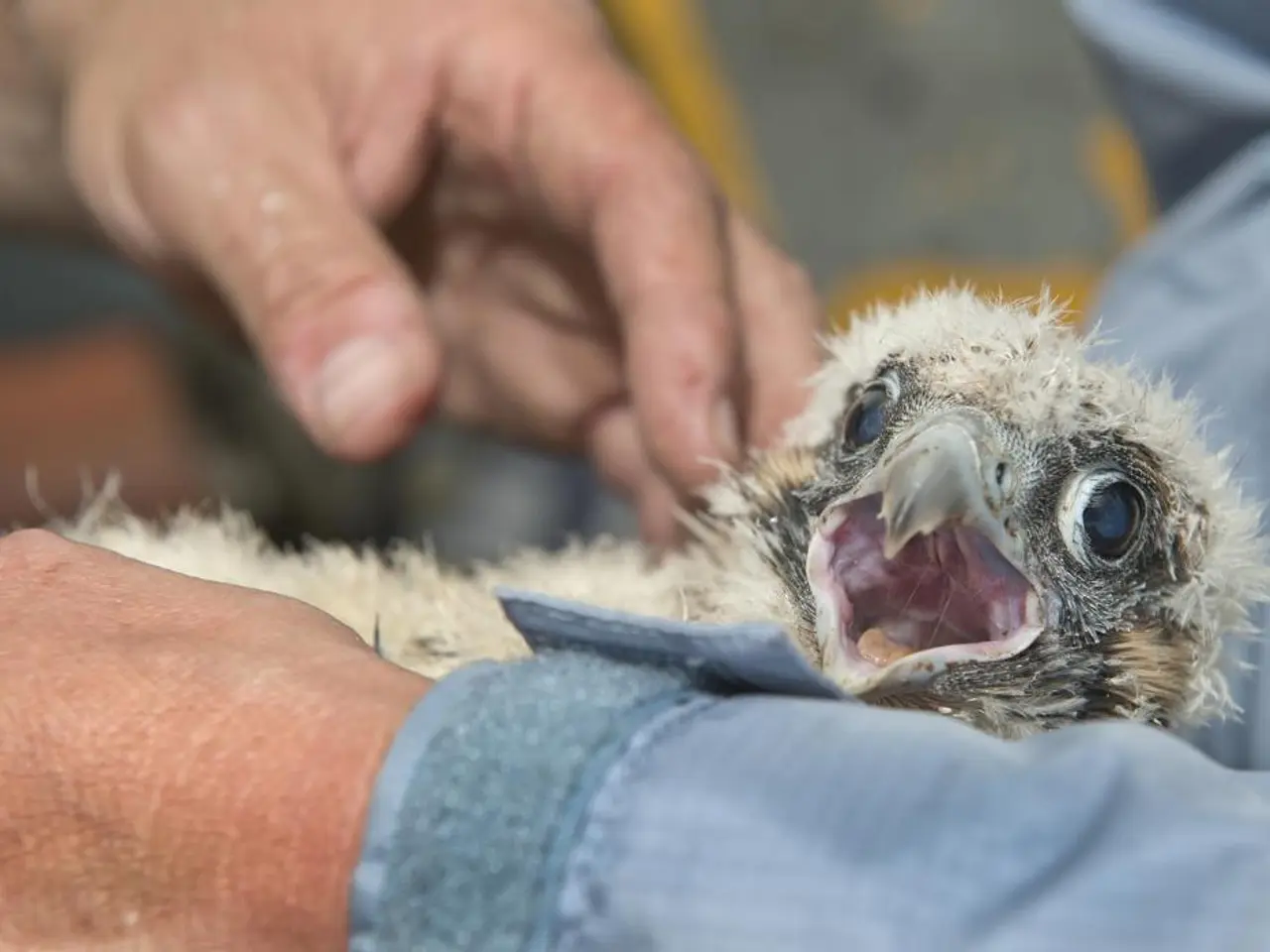Birds' Mating Habits Explored: An Examination of Birds' Reproductive Activities
In the enchanting world of avian life, courtship and mating rituals are a captivating spectacle of elaborate and species-specific behaviours. These rituals serve multiple purposes, from attracting mates, demonstrating fitness, to establishing pair bonds.
Many birds engage in complex dances and synchronized movements, creating a visual symphony of nature. The Clark’s Grebe, for instance, performs a multiphase ritual culminating in the "weed ceremony." In this captivating display, the pair swims in unison, rushes across water, dives to collect vegetation, and presents it in a balletic breast-to-breast posture, strengthening their bond through synchronization. Red-tailed hawks, on the other hand, engage in dramatic aerial displays, including synchronized circling, sky-dancing dives, and even interlocking talons mid-air to bond and defend territory.
Visual displays often involve bright colours and complex dances by male birds to attract females. For example, the vibrant plumage of a peacock unfolding its impressive tail feathers is a spectacle not to be missed. Some species, like great crested grebes, engage in visual face-to-face water dances, while feral pigeons perform puffing and bowing displays.
Birdsong is an essential part of courtship behaviour, with males often singing to broadcast their strength, territory, and genetic fitness. In species such as the weaver bird or bowerbird, a male's capacity to build a lovely and sturdy nest can be the difference between mating and not.
Courtship feeding, where the male provides food to the female, is another common behaviour. This act not only strengthens the bond between the pair but also signals the male's ability to provide for his potential offspring.
Mating itself tends to be brief and discreet, involving a “cloacal kiss,” where the male briefly mounts the female and transfers sperm via cloacal contact. Both sexes lack external genitalia found in mammals, sharing only one hole (cloaca) for sex, peeing, and pooping.
In species that form long-term pairs, courtship reinforces the bond and pair fidelity. Birds like red-tailed hawks often mate for life, cooperating year-round on nesting and chick-rearing. In contrast, females in some species may mate with multiple males to increase genetic diversity in their offspring despite typically only caring for one clutch.
Chicks are typically brooded by one or both parents post-hatch, with support and teaching how to survive being important elements in the early life of every species. After mating, the female initiates egg laying.
Understanding how birds mate is crucial to conservation and basic ecological research, as reproductive success is crucial for the health of a population. Environmental factors, such as seasons, daylight, climate, food availability, human influence, urbanization, pollution, deforestation, noise pollution, and habitat destruction, can influence bird mating.
Some bird species, like cuckoos, engage in nest parasitism, laying their eggs in the nest of another species, where the hapless host raises their chicks. A small number of bird species can engage in parthenogenesis, reproduction without fertilization, although this is highly unusual in birds.
Watching a video on how birds mate can help you get a live grasp of what's going on with the mating ritual, from courtship to copulation. It's a fascinating glimpse into the natural world, showcasing the diversity and complexity of avian courtship and mating rituals.
References:
- Clark’s Grebe Courtship
- Bird Reproduction
- Dunnock Mating Habits
- Red-tailed Hawk Courtship
- Cockatoo Courtship
- Ornithology, the science of birds, provides valuable insights into the complexities of bird species, including their courtship and mating rituals, which are essential for their health-and-wellness and population growth.
- Birdwatching is not only a visual delight with its spectacular displays but also a pathway to understanding the intricate rituals of birds, such as the synchronization of the Clark’s Grebe during their "weed ceremony" or the aerial displays of red-tailed hawks as they bond and defend their territory.
- The health-and-wellness benefits of birdwatching not only engage the mind and senses but also contribute to mental well-being, offering a peaceful connection with nature and an appreciation for the diverse and captivating world of avian life.




